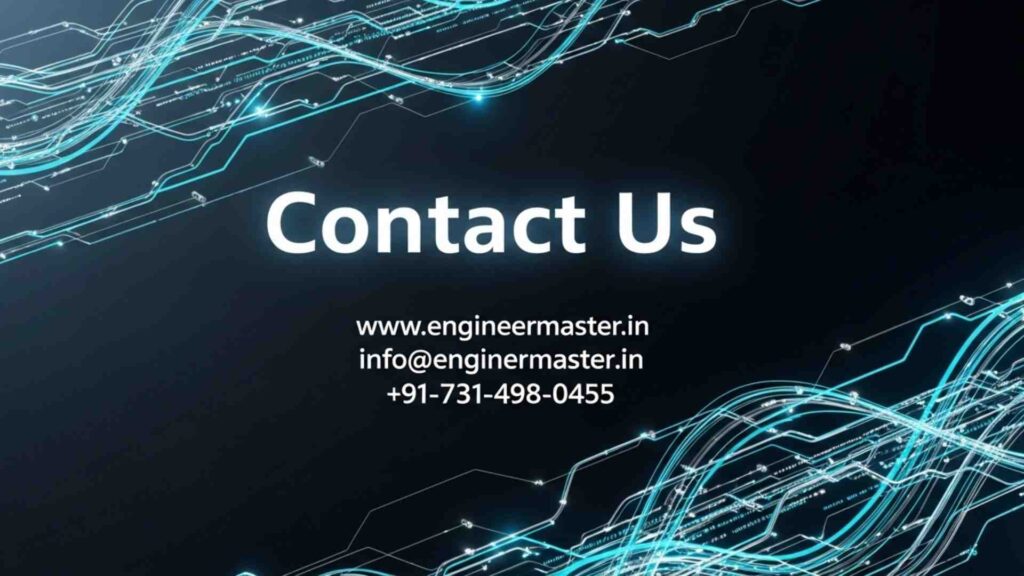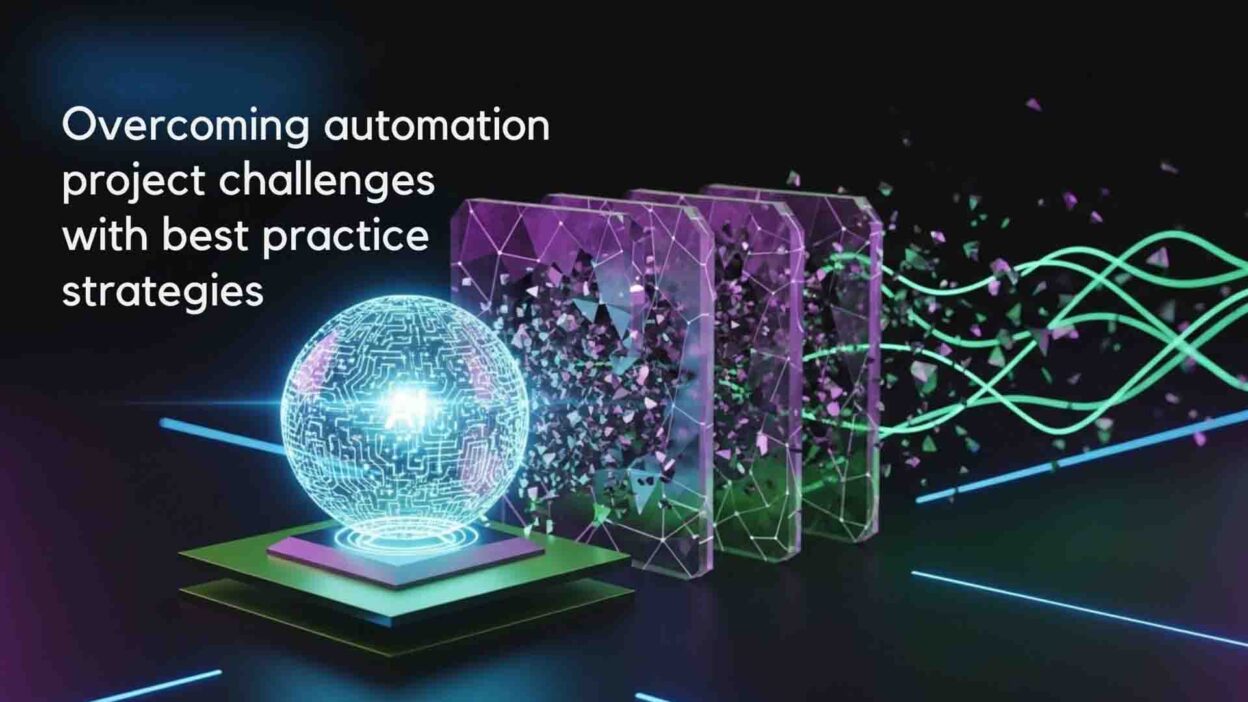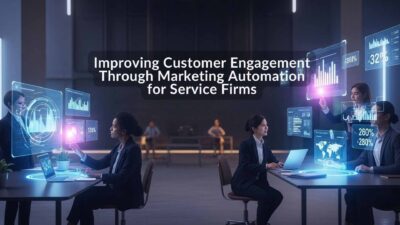Introduction
TL;DR Automation promises incredible benefits for modern organizations. Efficiency gains, cost reductions, and improved accuracy attract business leaders everywhere. Implementation reality often falls short of expectations dramatically.
Many automation initiatives fail to deliver promised outcomes. Projects run over budget and miss deadlines regularly. Teams struggle with technical complexity and organizational resistance.
Automation project challenges best practice strategies help organizations navigate common pitfalls successfully. Proven approaches reduce risk while accelerating value realization. Learning from others’ experiences prevents costly mistakes.
Research shows that 30-50% of automation projects fail completely. Others deliver minimal value despite substantial investment. Success requires more than purchasing technology platforms.
Leadership often underestimates implementation complexity. Simple-looking processes contain hidden dependencies and exceptions. Technical hurdles emerge unexpectedly during execution.
Employee resistance derails technically sound initiatives. People fear job loss and resist changing familiar routines. Cultural barriers prove harder to overcome than technical obstacles.
Budget overruns plague automation programs consistently. Initial estimates miss critical cost components. Scope creep expands projects beyond original intentions.
This comprehensive guide explores real challenges automation teams face. You’ll discover practical strategies that improve success probability. Detailed solutions address technical, organizational, and strategic obstacles.
Table of Contents
Understanding Common Automation Project Failures
Automation projects fail for predictable reasons. Recognizing failure patterns enables proactive prevention. Understanding root causes guides better planning.
Poor process selection dooms initiatives from the start. Teams automate complex workflows before mastering basics. High-value simple processes get overlooked for exciting complicated ones.
Inadequate stakeholder engagement creates resistance later. Key people get excluded from planning discussions. Implementation surprises generate opposition and sabotage.
Unrealistic timelines pressure teams into shortcuts. Leadership demands quick wins without proper groundwork. Technical debt accumulates from rushed implementation.
Insufficient technical expertise leads to poor design. Organizations lack in-house automation knowledge. Vendor dependencies create long-term vulnerabilities.
Change management gets neglected completely. Technology rollout happens without preparing people. Users reject unfamiliar systems regardless of benefits.
Data quality issues surface during implementation. Dirty data produces unreliable automated outcomes. Cleanup efforts delay projects significantly.
Integration complexity exceeds initial estimates. Legacy systems resist connection attempts. Point-to-point integrations create maintenance nightmares.
Security concerns get addressed too late. Automated processes access sensitive information. Compliance violations create regulatory exposure.
Inadequate testing produces unreliable automation. Edge cases break systems in production. User confidence erodes from repeated failures.
Performance problems emerge under real workloads. Systems tested with sample data fail at scale. Production issues damage credibility severely.
Vendor promises exceed actual capabilities. Marketing materials show idealized scenarios. Reality reveals significant product limitations.
Documentation gaps hinder maintenance and enhancement. Knowledge lives only in implementers’ heads. Staff turnover threatens operational continuity.
Strategic Planning Best Practices
Successful automation begins with thorough strategic planning. Proper preparation prevents most common failures. Automation project challenges best practice strategies start with solid foundations.
Conducting Comprehensive Readiness Assessments
Organizations must evaluate automation readiness honestly. Multiple dimensions require assessment before starting. Gaps need addressing before technology deployment.
Process maturity affects automation feasibility significantly. Chaotic unstandardized workflows automate poorly. Stabilization must precede automation attempts.
Technical infrastructure readiness determines implementation approaches. Legacy systems may require modernization first. Integration capabilities enable or constrain options.
Data quality directly impacts automation success. Inconsistent inaccurate information produces unreliable results. Cleanup efforts should happen upfront.
Organizational culture affects adoption rates dramatically. Change-resistant cultures need different approaches. Leadership support proves absolutely critical.
Available skills determine build-versus-buy decisions. Internal capabilities influence technology selections. Training needs get identified early.
Budget realism prevents mid-project funding crises. Comprehensive cost estimates include hidden expenses. Contingency reserves account for uncertainties.
Developing Clear Business Cases
Strong business justification sustains projects through challenges. Vague benefits statements fail to maintain support. Quantified value projections guide investment decisions.
Current state analysis establishes accurate baselines. Actual performance metrics provide comparison points. Assumptions get validated through data collection.
Future state design defines target operating models. Specific improvements get documented clearly. Measurable outcomes enable success evaluation.
Financial modeling calculates return on investment. Cost savings and revenue impacts get quantified. Payback periods inform prioritization decisions.
Risk assessment identifies potential problems proactively. Technical and organizational risks get evaluated. Mitigation strategies develop for major threats.
Alternative approaches get compared objectively. Build versus buy tradeoffs get analyzed. Phasing options balance risk and value.
Selecting Appropriate Processes for Automation
Not every process deserves automation investment. Strategic selection maximizes return on effort. Automation project challenges best practice strategies emphasize smart prioritization.
Volume analysis identifies high-impact opportunities. Frequent transactions multiply automation benefits. Low-volume processes rarely justify investment.
Complexity assessment determines implementation difficulty. Simple linear workflows automate most easily. Excessive complexity indicates poor candidates.
Stability evaluation reveals change frequency. Frequently changing processes need stabilization first. Constant updates undermine automation value.
Rule clarity enables effective automation. Well-defined decision logic translates into code. Ambiguous judgment calls resist automation.
Exception frequency affects automation viability. High exception rates require extensive human intervention. Straight-through processing delivers best results.
Standardization level determines automation readiness. Consistent execution enables effective automation. Wide variation requires process redesign.
Strategic value influences prioritization decisions. Customer-facing processes may warrant higher priority. Back-office optimization frees resources for growth.
Technical Implementation Excellence
Technical execution determines automation reliability and performance. Engineering discipline prevents common pitfalls. Sound practices ensure robust sustainable solutions.
Architecting Scalable Automation Platforms
Technology architecture decisions have long-term consequences. Shortcuts create technical debt and limitations. Proper design enables growth and evolution.
Modular design separates concerns appropriately. Individual components handle specific functions. Changes affect limited system areas.
API-first approaches facilitate integration. Standardized interfaces enable system connectivity. Future additions integrate more easily.
Cloud-native architectures provide flexibility and scalability. On-demand resources accommodate growth. Global deployment becomes straightforward.
Microservices enable independent component evolution. Services update without affecting others. Technology choices vary by component appropriately.
Event-driven patterns decouple system dependencies. Loose coupling increases flexibility significantly. Systems communicate through event streams.
Containerization ensures consistent deployment. Applications run identically across environments. Infrastructure dependencies decrease substantially.
Security gets built into architecture fundamentally. Defense in depth protects against threats. Compliance requirements shape design decisions.
Managing Data Quality and Integration
Data issues cause most automation failures. Automation project challenges best practice strategies address information management comprehensively. Quality and integration determine success.
Data profiling reveals quality problems early. Statistical analysis identifies inconsistencies and errors. Remediation happens before automation deployment.
Cleansing rules standardize information systematically. Transformation logic converts data into consistent formats. Validation prevents bad data from entering.
Master data management establishes authoritative sources. Single versions of truth eliminate conflicts. Downstream systems reference central repositories.
Integration patterns connect disparate systems appropriately. Point-to-point connections get avoided carefully. Middleware platforms manage connectivity centrally.
Real-time synchronization maintains data currency. Changes propagate immediately across systems. Stale information doesn’t mislead decisions.
Error handling manages inevitable data problems. Automated retries resolve temporary issues. Human intervention queues handle persistent problems.
Implementing Robust Testing Strategies
Thorough testing prevents production failures. Multiple testing types catch different problems. Quality assurance cannot happen as afterthought.
Unit testing validates individual components. Developers verify code functions correctly. Automated tests run with every change.
Integration testing confirms system interactions. Connected components work together properly. Interface contracts get validated thoroughly.
Performance testing reveals scalability limits. Load simulations identify bottlenecks early. Capacity planning uses actual measurements.
User acceptance testing validates business requirements. Real users confirm solutions meet needs. Feedback drives final adjustments.
Security testing identifies vulnerabilities proactively. Penetration testing simulates attacks. Remediation happens before production deployment.
Regression testing prevents breaking existing functionality. Automated suites run continuously. Changes don’t introduce new problems.
Disaster recovery testing validates backup procedures. Restoration processes get practiced regularly. Business continuity gets verified empirically.
Organizational Change Management
Technology represents only half of automation success. People determine whether initiatives deliver value. Cultural adaptation requires deliberate effort.
Building Executive Sponsorship
Leadership support proves critical for success. Visible champions overcome organizational resistance. Automation project challenges best practice strategies require strong sponsorship.
Executive education explains automation benefits clearly. Business cases demonstrate strategic value. Leaders understand why automation matters.
Steering committees provide governance and direction. Senior leaders make key decisions. Resources get allocated appropriately.
Regular updates maintain leadership engagement. Progress reports celebrate successes. Challenges get escalated for resolution.
Budget protection ensures project completion. Competing priorities threaten funding constantly. Committed sponsors defend automation investments.
Organizational barriers require executive intervention. Cross-functional issues need senior resolution. Politics get navigated effectively.
Engaging Stakeholders Throughout Projects
Inclusive approaches build support and improve solutions. Diverse perspectives reveal blind spots. Engagement strategies vary by audience.
Early involvement prevents resistance later. People support what they help create. Participation builds ownership and commitment.
Communication plans address different audience needs. Executives need strategic updates. Users want practical implementation details.
Feedback mechanisms capture concerns and suggestions. Regular input opportunities maintain engagement. Responsiveness builds trust significantly.
Pilot programs demonstrate value tangibly. Small-scale successes convince skeptics. Proof points overcome abstract concerns.
Change champion networks spread positive messages. Respected colleagues influence peers effectively. Grassroots support complements leadership sponsorship.
Training and Enabling Users
People need new skills for automated environments. Comprehensive training ensures successful adoption. Learning programs match audience needs.
Skills assessments identify capability gaps. Current state analysis reveals training requirements. Programs address actual deficiencies.
Role-based training focuses on relevant content. Users learn what they need specifically. Irrelevant information gets excluded.
Hands-on practice builds confidence effectively. Sandbox environments allow experimentation safely. Learning by doing beats passive instruction.
Just-in-time learning provides help when needed. Contextual guidance appears during work. Users don’t memorize everything upfront.
Reference materials support ongoing learning. Quick guides and videos enable self-service. Documentation remains accessible always.
Certification programs validate competency. Assessments verify skill development. Credentials recognize achievement publicly.
Continuous learning addresses evolving capabilities. Ongoing training introduces new features. Skills remain current over time.
Risk Mitigation Strategies
Automation projects face numerous risks. Proactive management prevents problems from materializing. Automation project challenges best practice strategies include comprehensive risk approaches.
Identifying and Assessing Project Risks
Risk identification requires systematic analysis. Multiple perspectives reveal different threats. Comprehensive catalogs guide mitigation planning.
Technical risks threaten implementation success. Integration failures and performance problems occur frequently. Architecture reviews identify technical vulnerabilities.
Organizational risks involve people and culture. Resistance and skill gaps impede progress. Stakeholder analysis reveals human challenges.
Vendor risks create external dependencies. Product limitations and company instability threaten projects. Due diligence evaluates vendor reliability.
Financial risks include budget overruns. Scope creep and unforeseen costs drain resources. Regular financial tracking catches problems early.
Schedule risks delay value realization. Dependencies and resource constraints affect timelines. Critical path analysis identifies vulnerabilities.
Compliance risks expose organizations to penalties. Regulatory violations carry serious consequences. Legal reviews ensure requirement satisfaction.
Security risks threaten data and systems. Breaches damage reputation and finances. Security assessments identify vulnerabilities proactively.
Developing Mitigation Plans
Identified risks need specific response strategies. Mitigation reduces probability or impact. Contingency plans address residual risks.
Avoidance eliminates certain risks completely. Alternative approaches bypass problematic areas. Some risks simply get avoided.
Reduction strategies minimize risk likelihood. Process improvements and controls decrease probability. Impact gets limited through containment.
Transfer moves risks to other parties. Insurance and contracts shift responsibility. Vendors assume certain risks contractually.
Acceptance acknowledges unavoidable risks consciously. Contingency plans prepare for potential occurrence. Reserves cover financial impacts.
Monitoring tracks risks throughout projects. Regular reviews catch emerging threats. Early warning enables timely responses.
Managing Scope Creep
Uncontrolled scope expansion destroys projects. Features accumulate beyond original intentions. Discipline prevents scope creep damage.
Requirements get documented comprehensively upfront. Detailed specifications establish scope boundaries. Ambiguity invites expansion later.
Change control processes govern modifications. Formal requests document proposed changes. Impact analysis evaluates consequences.
Approval authorities make scope decisions. Stakeholder committees evaluate requests. Changes require explicit authorization.
Prioritization balances competing demands. Essential features get implemented first. Nice-to-have additions get deferred.
Phased delivery limits initial scope. Minimal viable products deliver core value. Enhancements come in later releases.
Measuring and Optimizing Performance
Automation value requires quantification. Metrics demonstrate success objectively. Continuous improvement maintains competitive advantages.
Establishing Baseline Metrics
Current performance establishes comparison points. Accurate baselines enable improvement measurement. Automation project challenges best practice strategies demand solid metrics.
Process mining reveals actual performance. Event data shows real cycle times. Assumptions get replaced with facts.
Time studies quantify processing duration. Manual task timing provides benchmarks. Automation impact becomes calculable.
Error tracking documents quality problems. Mistake frequency and types get cataloged. Improvement targets emerge from data.
Cost analysis captures complete expenses. Labor, materials, and overhead all count. True costs inform ROI calculations.
Volume metrics show transaction quantities. Throughput rates establish capacity baselines. Scalability needs become clear.
Customer satisfaction surveys measure experience. Current state sentiment provides comparison. Improvement gets tracked over time.
Defining Success Metrics
Clear success criteria guide implementation. Specific measurable goals enable evaluation. Ambiguous objectives prevent assessment.
Efficiency metrics show productivity gains. Processing time reductions get quantified. Throughput increases demonstrate capacity improvements.
Quality metrics reveal accuracy enhancements. Error rate decreases prove improvement. Defect elimination saves correction costs.
Financial metrics demonstrate business value. Cost savings and revenue impacts matter most. Return on investment justifies decisions.
Adoption metrics track user engagement. Utilization rates show acceptance. Low adoption signals problems.
Customer metrics measure external impact. Satisfaction and retention indicate success. Revenue effects prove business value.
Employee metrics show internal effects. Satisfaction and turnover reveal cultural impact. Engagement demonstrates acceptance.
Implementing Continuous Improvement
Initial automation represents starting points. Ongoing optimization maintains advantages. Regular enhancement cycles drive excellence.
Performance monitoring identifies improvement opportunities. Dashboards reveal current states. Degradation triggers investigation.
Root cause analysis determines problem sources. Data-driven investigation finds true causes. Solutions target fundamentals.
A/B testing compares alternatives objectively. Experiments reveal better approaches. Data determines superior methods.
User feedback captures practical insights. Daily operators identify issues. Bottom-up suggestions drive improvements.
Benchmarking compares against best practices. External standards reveal gaps. Competitive analysis guides targets.
Innovation explores new capabilities. Emerging technologies enable enhancements. Experimentation discovers better approaches.
Industry-Specific Implementation Challenges
Different sectors face unique automation obstacles. Regulatory environments and operational characteristics vary. Solutions must adapt to industry contexts.
Healthcare Automation Complexities
Healthcare providers navigate strict regulations. Patient safety and privacy demand caution. Clinical workflows resist standardization.
HIPAA compliance constrains data handling. Privacy rules limit automation approaches. Security requirements exceed typical standards.
Clinical variation creates implementation challenges. Medical decisions involve complex judgment. Protocol exceptions occur frequently.
Legacy system integration proves difficult. Hospital information systems resist connectivity. Interoperability standards help partially.
Physician resistance affects adoption rates. Clinical staff prefer familiar workflows. Evidence-based approaches convince skeptics.
Financial Services Regulatory Requirements
Banks face extensive compliance obligations. Regulators scrutinize automation carefully. Automation project challenges best practice strategies must address oversight.
Audit trail requirements demand detailed logging. Every automated decision needs documentation. Explainability proves critical for approval.
Risk management frameworks govern implementations. Controls and testing follow strict standards. Validation requirements exceed typical practices.
Data privacy regulations restrict information usage. Customer data handling follows strict rules. Consent management adds complexity.
Disaster recovery expectations demand redundancy. Financial operations cannot tolerate downtime. Business continuity requirements shape architecture.
Manufacturing Operational Constraints
Factories operate continuously around the clock. Downtime costs enormous sums immediately. Implementation timing becomes critical.
Production system integration affects output directly. Automation must not disrupt operations. Parallel running reduces cutover risk.
Equipment interfaces vary widely. Proprietary protocols complicate connectivity. Industrial IoT standards help gradually.
Real-time requirements demand low latency. Manufacturing processes cannot tolerate delays. Performance becomes absolutely critical.
Safety systems require special handling. Automated controls must prevent accidents. Certification processes ensure safety compliance.
Technology Selection and Vendor Management
Marketplace complexity overwhelms technology buyers. Hundreds of vendors claim similar capabilities. Smart selection prevents costly mistakes.
Evaluating Automation Platforms
Systematic evaluation reduces selection risk. Multiple criteria guide comparisons. Automation project challenges best practice strategies inform technology choices.
Functional capabilities must match requirements. Feature checklists guide initial screening. Detailed scenarios test actual capabilities.
Technical architecture affects long-term success. Modern cloud-native platforms offer advantages. Legacy on-premise solutions carry limitations.
Integration capabilities determine ecosystem fit. Pre-built connectors accelerate implementation. Open APIs enable custom connections.
Scalability accommodates growth needs. Volume handling capacity matters significantly. Performance under load needs validation.
User experience drives adoption success. Intuitive interfaces encourage usage. Complex tools remain underutilized.
Vendor viability affects long-term relationships. Financial stability and market position matter. Reference checks reveal customer satisfaction.
Pricing models align with usage patterns. Per-transaction costs scale differently than subscriptions. Total cost of ownership requires calculation.
Managing Vendor Relationships
Vendor dependencies create ongoing obligations. Effective management protects organizational interests. Partnership approaches work best.
Contract negotiations establish clear terms. Service levels get defined explicitly. Penalties enforce accountability.
Governance frameworks manage relationships. Regular reviews address issues proactively. Escalation paths resolve conflicts.
Performance monitoring tracks vendor delivery. Metrics measure against commitments. Data drives improvement discussions.
Innovation roadmaps align vendor and customer. Future capabilities get planned collaboratively. Partnerships evolve over time.
Exit strategies protect against vendor failure. Backup plans address discontinuation scenarios. Data portability prevents lock-in.
Future-Proofing Automation Investments
Technology landscapes evolve rapidly. Today’s solutions become tomorrow’s legacy systems. Forward-thinking approaches maintain relevance.
Building Adaptable Architectures
Rigid designs resist inevitable changes. Flexibility enables evolution over time. Architectural principles guide longevity.
Loose coupling minimizes component dependencies. Changes affect limited system areas. Modifications happen more easily.
Standard interfaces enable component replacement. Proprietary connections create lock-in. Openness provides options.
Configuration over customization improves maintainability. Parameter-driven behavior adapts without code changes. Updates happen more easily.
Version management enables controlled evolution. Backward compatibility maintains stability. Migration paths ease transitions.
Embracing Emerging Technologies
Innovation continues accelerating dramatically. New capabilities emerge regularly. Organizations must evaluate and adopt appropriately.
Artificial intelligence augments automation increasingly. Machine learning handles ambiguity better. Cognitive capabilities approach human levels.
Low-code platforms democratize development. Business users create solutions directly. IT becomes enabler rather than bottleneck.
Process intelligence provides continuous insight. Mining reveals optimization opportunities automatically. Analytics guide improvement efforts.
Blockchain enables trusted automation. Distributed ledgers provide transparency. Smart contracts execute automatically.
Frequently Asked Questions
What are the most common automation project challenges?
Common challenges include poor process selection, inadequate stakeholder engagement, unrealistic timelines, insufficient expertise, neglected change management, data quality issues, integration complexity, security concerns, inadequate testing, and performance problems. Automation project challenges best practice strategies address these systematically.
How long do automation projects typically take?
Duration varies by scope and complexity. Simple robotic automation deploys in weeks. Comprehensive enterprise programs take months or years. Phased approaches deliver incremental value continuously throughout implementation.
What percentage of automation projects fail?
Research indicates 30-50% of automation initiatives fail completely. Many others deliver minimal value despite investment. Success requires addressing technical, organizational, and strategic challenges comprehensively through proven approaches.
How much should organizations budget for automation?
Costs depend on scope, technology, and approach. Simple projects start at tens of thousands. Enterprise implementations reach millions. Comprehensive budgets include licensing, implementation, training, and ongoing maintenance expenses.
What skills do automation projects require?
Requirements vary by technology choices. Technical skills include development, integration, and architecture. Business analysis and change management capabilities prove equally critical. Training and external expertise fill gaps.
How do we measure automation project success?
Success metrics include efficiency gains, quality improvements, cost savings, user adoption rates, and customer satisfaction improvements. Baseline measurements enable comparison. Return on investment calculations demonstrate financial value objectively.
Should we build or buy automation solutions?
Build-versus-buy decisions depend on requirements, capabilities, and resources. Commercial platforms accelerate deployment significantly. Custom development provides perfect fit. Hybrid approaches combine advantages effectively. Strategic value and competitive advantage guide decisions.
How do we overcome employee resistance to automation?
Resistance stems from job security fears and change aversion. Early communication addresses concerns honestly. Involvement in design builds ownership. Training provides confidence. Automation project challenges best practice strategies emphasize comprehensive change management approaches throughout implementation.
Read more:-Why Your Business Needs Process Mining & AI Automation
Conclusion

Automation delivers transformative benefits when implemented successfully. Efficiency gains, cost reductions, and quality improvements justify investments. Reality proves more challenging than vendor promises suggest.
Automation project challenges best practice strategies help organizations navigate common obstacles. Proven approaches reduce failure risk significantly. Learning from others prevents costly mistakes.
Strategic planning establishes solid foundations. Readiness assessments reveal gaps needing attention. Business cases justify investments and guide decisions.
Process selection determines success probability. High-volume simple workflows deliver best returns. Complex unstable processes need stabilization first.
Technical excellence ensures reliable performance. Sound architecture enables growth and evolution. Quality data and robust integration prove critical.
Change management determines whether people adopt solutions. Leadership sponsorship overcomes organizational resistance. Comprehensive training builds user confidence.
Risk management prevents problems from derailing projects. Proactive identification enables mitigation planning. Contingency strategies address unavoidable risks.
Measurement demonstrates value objectively. Baseline metrics enable comparison. Continuous improvement maintains competitive advantages.
Industry-specific challenges require adapted approaches. Regulations and operational characteristics vary. Solutions must fit contextual realities.
Technology selection impacts long-term success. Systematic evaluation prevents poor choices. Vendor management protects organizational interests.
Future-proofing extends automation value. Adaptable architectures accommodate evolution. Emerging technologies get evaluated continuously.
Common mistakes recur across organizations. Poor planning, inadequate engagement, and rushed implementation cause failures. Following proven practices dramatically improves outcomes.
Success requires balanced attention to technology and people. Engineering excellence alone proves insufficient. Cultural adaptation determines value realization.
Organizations must commit to comprehensive approaches. Quick fixes and shortcuts produce disappointing results. Sustained effort delivers transformational outcomes.
Automation project challenges best practice strategies provide roadmaps for success. Proven methods reduce uncertainty significantly. Strategic discipline guides effective implementation.
The automation journey demands patience and persistence. Early challenges test commitment levels. Properly managed initiatives deliver substantial returns.
Begin with thorough preparation and realistic planning. Assess readiness honestly before starting. Select appropriate processes strategically.
Build strong foundations through sound architecture. Ensure data quality and robust integration. Test comprehensively before production deployment.
Engage people throughout implementation journeys. Communicate frequently and transparently. Train thoroughly and support continuously.
Measure rigorously and improve continuously. Track performance against objectives. Optimize based on actual results.
Learn from each implementation experience. Capture lessons and refine approaches. Build organizational capability systematically.
Automation success becomes achievable through disciplined execution. Automation project challenges best practice strategies light the path forward. Organizations applying proven methods realize promised benefits. Start your automation journey today armed with knowledge and practical strategies for overcoming inevitable challenges successfully.





